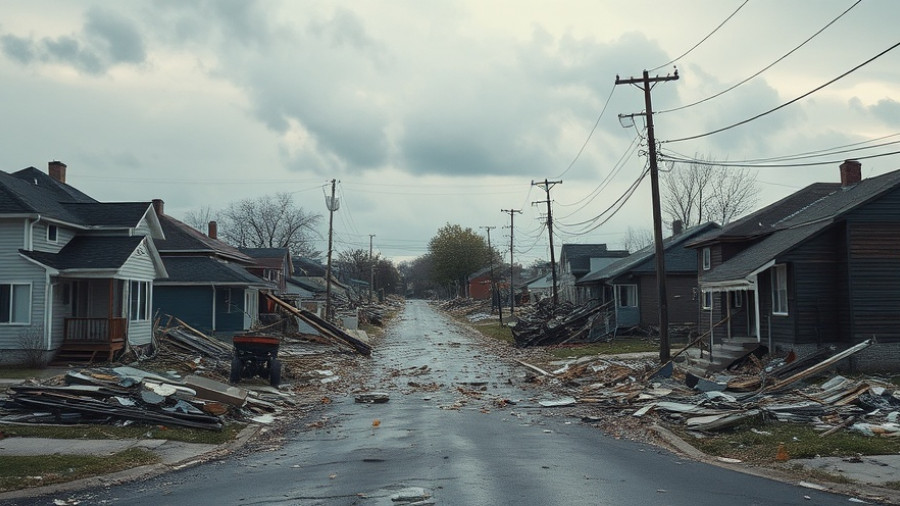
Understanding the Incident: A Collision at LaGuardia
On a recent evening at New York's LaGuardia Airport, two regional jets operated by Delta Air Lines found themselves entangled in a taxing incident that has raised significant safety concerns. The event, which occurred during a low-speed taxi, resulted in minor injuries for one flight attendant, while underscoring larger questions about aviation safety protocols. The collision involved Endeavor Air Flight 5047, which was arriving from Charlotte, North Carolina, and Endeavor Air Flight 5155, which was preparing for departure to Roanoke, Virginia.
The Federal Aviation Administration (FAA) has launched an investigation to determine the contributing factors, noting that air traffic control had instructed Flight 5155 to hold its position while Flight 5047 came into the gate area. As the investigation unfolds, both the National Transportation Safety Board (NTSB) and the FAA are analyzing data recovered from flight recorders to piece together the sequence of events.
A Common Risk: The Nature of Taxiway Collisions
Taxiway collisions, while unfortunate, are not entirely unheard of in aviation. A concerning trend has been noted at LaGuardia, with several incidents triggering scrutiny over safety measures. Just this past spring, another Delta jet wing struck the runway, leading to federal investigations. In May, a Republic Airways jet nearly collided with another during a takeoff, further stirring worry about procedural adherence and situational awareness among flight crews.
The latest collision has reignited discussions regarding the integration of technology and human error in managing ground operations. With advanced surface radar existing at LaGuardia to monitor aircraft movements on the taxiway, the effectiveness and operational reliability of these systems are now at the forefront of scrutiny.
Legal Implications: What Happens Next?
For passengers and crew members, understanding their rights following an aviation incident such as this one is crucial. Delta’s commitment to safety and customer care is commendable; however, the aftermath of such events often raises questions around compensation, liability, and the insurance claim process. Affected individuals may consider pursuing claims for personal injuries or property damage under aviation liability laws.
Health experts indicate that while physical injuries may be minor, psychological impacts stemming from traumatic incidents can linger. Flight crews and passengers alike may benefit from legal guidance to navigate the complexities of potential claims. Working with informed legal representation can help them comprehend their entitlements and effectively deal with insurance adjusters.
Navigating Insurance Claims After an Aviation Incident
The chaos following an aviation mishap often complicates the insurance claim process. Knowing how to file a claim effectively can play a pivotal role in receiving a fair settlement post-incident. Crucially, passengers should gather all relevant documentation, including personal injuries, expenses incurred, and any correspondence with airline representatives.
Additionally, understanding the typical claims timeline is essential. Insurance companies typically require a comprehensive report about the incident, including medical evaluations and documentation of damages. Each step of the process, from initial filing to negotiations, can be daunting; therefore, seeking assistance from experienced professionals who can advocate on your behalf is advisable.
Take Action: Stay Informed
The LaGuardia incident serves as a reminder of the importance of safety in air travel. If you find yourself in a similar situation, awareness of your rights and the necessary steps to take post-incident can make all the difference. For aviation enthusiasts, frequent fliers, or those impacted by air travel mishaps, staying informed about safety protocols and knowing how to effectively engage with your insurance provider is key.
In summary, as investigations proceed, passengers and crew can feel reassured that aviation agencies prioritize safety. Meanwhile, being educated on the claims process and your rights will substantially empower you should you ever need to file a claim following an aviation incident.
 Add Row
Add Row  Add
Add 




Write A Comment